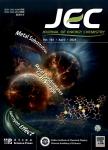版权所有:内蒙古大学图书馆 技术提供:维普资讯• 智图
内蒙古自治区呼和浩特市赛罕区大学西街235号 邮编: 010021

作者机构:State Key Laboratory of Biochemical Engineering Institute of Process Engineering Chinese Academy of Sciences National Laboratory for Clean Energy Dalian Institute of Chemical Physics Chinese Academy of Sciences
出 版 物:《Journal of Energy Chemistry》 (能源化学(英文版))
年 卷 期:2019年第28卷第1期
页 面:39-45页
核心收录:
基 金:Financial support from the National Science and Technology Planning Project (No. 2011BAC08B00) the National High Technology Research and Development Program of China (863 Program) (No.2012AA03A611)
主 题:Poly(amide-12-b-ethylene oxide) Polyethylene glycol Blend membrane Carbon dioxide separation
摘 要:Membranes from block copolymer poly(amide-12-b-ethylene oxide)(Pebax1074) and its blends with different molecular weight poly(ethylene glycol)(PEG)(200, 400, 600, 1500, 4600 and 8000) were prepared. The thermal properties and structures of Pebax1074/PEG blend membranes were characterized by DSC and SEM, and the gas permeation properties of CO_2 and N_2 were also investigated at different temperatures. For Pebax1074/PEG blend membranes with low molecular weight PEG(MW≤ 600), higher gas permeabilities than Pebax1074 were achieved. The permeability increased with the increase of PEG molecular weight. The addition of low molecular weight PEG resulted in decrease in activation energy of permeation. For Pebax1074/PEG blend membranes with high molecular weight PEG(MW≥ 1500), due to the melt of PEO phase crystals, the gas permeation properties of blend membranes were temperaturedependent, which could be divided into crystalline region, transition region and amorphous region according to two different transition temperatures. PEG molecular weight and operation temperature determined different gas permeation properties of Pebax1074/PEG blend membranes in three regions. The activation energies of permeation in crystalline region were larger than those in amorphous region.